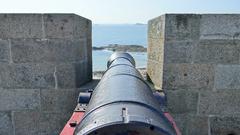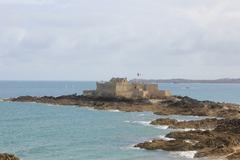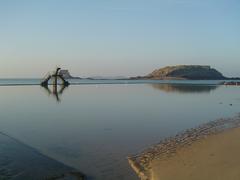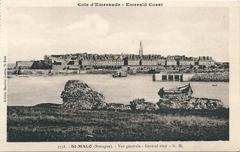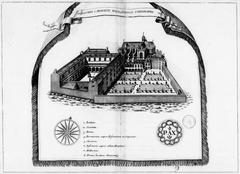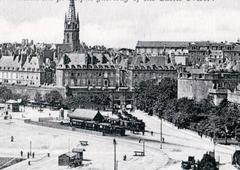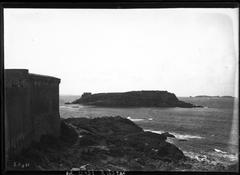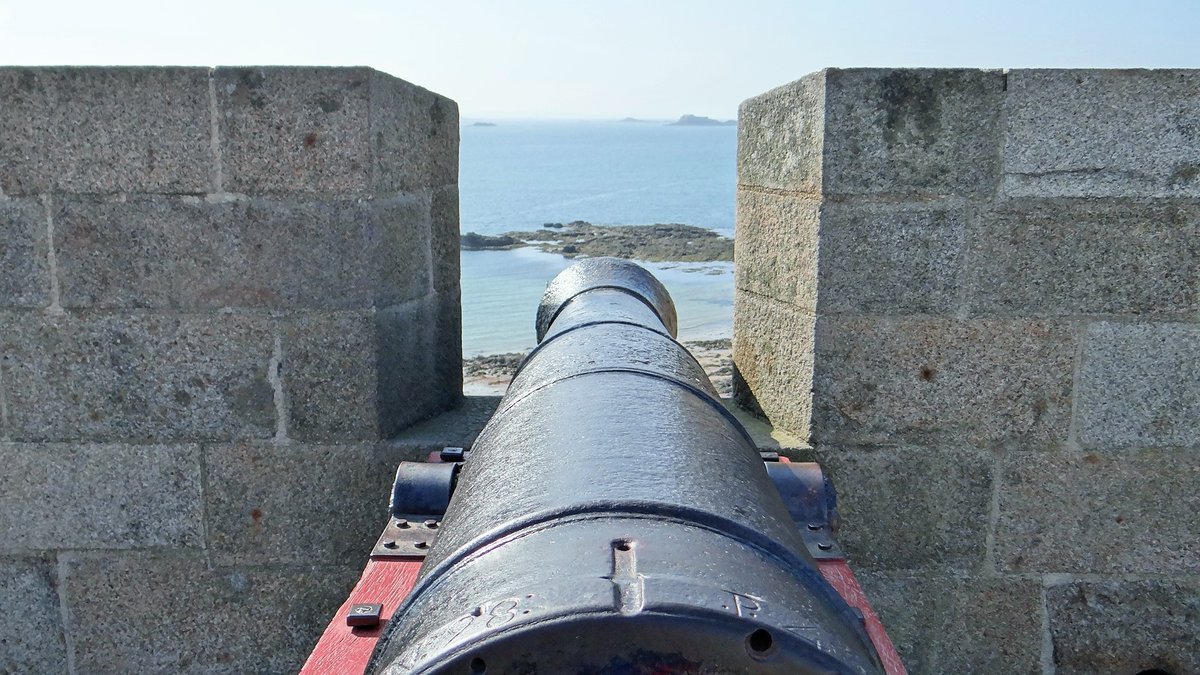
Bastion De La Hollande: Visiting Hours, Tickets, and Saint-Malo Historical Sites Guide
Date: 14/06/2025
Introduction
Nestled within the storied ramparts of Saint-Malo, the Bastion de la Hollande stands as a monumental testament to Brittany’s military ingenuity, maritime legacy, and resilient spirit. Erected in the late 17th century amid the Franco-Dutch War, this bastion—strategically positioned on the northern ramparts—served both as a bulwark against naval incursions and as a symbol of the city’s fiercely independent identity. Today, Bastion de la Hollande offers visitors sweeping views of the Bay of Saint-Malo and the English Channel, inviting exploration of its rich history, architectural features, and cultural resonance. This comprehensive guide will detail its origins, role in Saint-Malo’s defenses, cultural significance, practical visiting information, and tips to enhance your visit (Saint-Malo Historical Sites; Travel France Online).
Table of Contents
- Origins and Construction
- Military Role and Unique Practices
- Cultural and Symbolic Importance
- Visitor Information: Hours, Tickets, and Accessibility
- Travel Tips and Nearby Attractions
- Guided Tours and Interpretive Elements
- Frequently Asked Questions (FAQ)
- Practical Tips for Visitors
- Accessibility and Getting There
- Best Times to Visit
- Integration with the Ramparts Walk
- Preservation and Modern Relevance
- Language and Local Etiquette
- Conclusion and Recommendations
Origins and Construction
The Bastion de la Hollande was built in 1674 during the height of the Franco-Dutch War, a period that saw Saint-Malo’s transformation into one of France’s most formidable fortified ports. Its name commemorates the Dutch—France’s adversaries at the time—and its construction was part of a broader modernization of Saint-Malo’s defenses. The renowned military engineer Vauban, alongside his protégé Siméon Garangeau, oversaw this ambitious project, utilizing advanced techniques to ensure the city’s security (monsieur-de-france.com; lieux-insolites.fr).
Built on the site of old mills, the bastion was designed as an expansive esplanade (about 2,200 square meters) capable of housing artillery and troops, with thick granite walls to repel cannon fire and withstand sieges.
Military Role and Unique Practices
Defensive Features
By 1696, the Bastion de la Hollande was armed with 24 heavy cannons, donated by the Comte de Toulouse, ensuring formidable protection against enemy fleets. Its elevated position offered commanding views over the bay, enabling defenders to detect and deter naval threats (petitfute.com).
The Legendary Watchdogs
Among Saint-Malo’s most unique defensive strategies was the nightly release of 24 English mastiffs, housed in kennels beneath the bastion. These watchdogs patrolled the ramparts, deterring intruders until the practice was discontinued in 1772 after an unfortunate incident involving a returning nobleman. The “noguette” bell was rung nightly to warn citizens of the dogs’ release, underscoring the city’s vigilance (lieux-insolites.fr).
Cultural and Symbolic Importance
More than a military structure, the Bastion de la Hollande embodies the independent spirit of Saint-Malo. The local motto—“Neither French nor Breton, Malouin I am”—reflects this proud identity, forged through centuries of privateering, exploration, and self-governance (nationalgeographic.com). The statue of Jacques Cartier, the famed explorer who claimed Canada for France, stands atop the bastion as a symbol of the city’s maritime heritage and global connections (saint-malo.fr).
Visitor Information: Hours, Tickets, and Accessibility
Visiting Hours
- April to September: 9:00 AM – 7:00 PM
- October to March: 9:00 AM – 5:00 PM
- The ramparts are generally accessible year-round during daylight hours, but hours may vary with the season, weather, and local events (Saint-Malo Tourism).
Tickets and Admission
- Admission: Free of charge for self-guided visits.
- Guided tours and special events may require tickets, available through the Tourist Office or authorized tour operators.
Accessibility
- The main esplanade is paved and relatively flat; however, some areas of the ramparts have cobblestones, stairs, or uneven surfaces.
- Wheelchair users can access the bastion via a paved ramp, but assistance may be needed for inclines and surface transitions (Little Miss Turtle).
- Accessible parking is available at Gate Dinan and Gate Saint-Vincent; accessible restrooms are at the Tourist Office and Gate La Grande Porte.
Travel Tips and Nearby Attractions
- Best times to visit: Early morning or late afternoon for optimal photography and fewer crowds.
- Dress code: Wear comfortable walking shoes and bring a windbreaker; the ramparts are exposed to wind and weather.
- Nearby sites: Fort National, Grand Bé and Petit Bé islands, Saint-Vincent Cathedral, Place Chateaubriand, and the Môle des Noires jetty (Trip2France).
- Food and drink: Numerous cafés and creperies are found within the intra-muros area; Creperie Le Corps de Garde is a popular accessible option.
Guided Tours and Interpretive Elements
- Guided tours: Available seasonally and bookable via the Tourist Office; these cover the ramparts, bastion, and old town history.
- Interpretive panels: Historical plaques and panels along the ramparts provide insight into the city’s defenses and figures like Jacques Cartier.
- Virtual tours: Saint-Malo’s official tourism website offers digital maps and virtual explorations for advance planning.
Frequently Asked Questions (FAQ)
Q: What are the opening hours?
A: The ramparts and Bastion de la Hollande are open year-round, typically from 9:00 AM to 7:00 PM (summer) and 9:00 AM to 5:00 PM (winter), but always check official sources for updates.
Q: Is admission free?
A: Yes, access to the ramparts and bastion is free; guided tours may require a ticket.
Q: Is it wheelchair accessible?
A: The bastion is accessible via a ramp, but manual wheelchair users may need assistance. Some areas of the ramparts are not accessible.
Q: Are guided tours available?
A: Yes, you can book tours through the Tourist Office or local operators.
Q: Where can I park?
A: Park outside the walled city; accessible spaces are near Gate Dinan and Gate Saint-Vincent.
Q: Are restrooms available?
A: Accessible restrooms are at the Tourist Office and Gate La Grande Porte.
Practical Tips for Visitors
- Photography: Bring a wide-angle lens for sweeping views; golden hour yields the best light.
- Safety: Watch for uneven surfaces; supervise children; avoid the ramparts in high winds or storms.
- Weather: Check forecasts and dress accordingly. The ramparts can be breezy even in summer.
- Facilities: No restrooms or food vendors on the bastion itself; amenities are available within intra-muros.
Accessibility and Getting There
- By foot: Saint-Malo’s intra-muros is pedestrian-friendly; the bastion is a short walk from the city’s main gates.
- By car: Parking is outside the walled city, with accessible spaces at key gates.
- By train: TGV connects Paris to Saint-Malo in about three hours; Rennes Bretagne is the nearest major airport.
- Public transport: Local buses stop near the intra-muros area.
Best Times to Visit
Spring and summer provide the most pleasant weather. Early mornings and late afternoons are ideal for crowd-free visits and photography. Check for special events or festivals, which may affect access (Carnets Vanille).
Integration with the Ramparts Walk
Bastion de la Hollande is a highlight of the 1.7 km ramparts circuit—popular for panoramic views and historical exploration. Walking the full circuit takes about 45 minutes at a leisurely pace, with plenty of opportunities to stop at other bastions, towers, and viewpoints.
Preservation and Modern Relevance
Protected as a historical monument, the Bastion de la Hollande exemplifies the adaptive reuse of military heritage. Its transition from a defensive stronghold to a public promenade reflects both historical preservation and civic pride (Travel France Online). Restoration efforts maintain its integrity while making it accessible for future generations.
Language and Local Etiquette
French is the main language, but English is widely spoken in tourist areas. Always greet with a polite “Bonjour.” Tipping is not obligatory but appreciated; rounding up is customary.
Conclusion and Recommendations
The Bastion de la Hollande is an essential stop for anyone exploring Saint-Malo’s heritage—combining dramatic coastal views, layered military history, and vibrant local culture. Its free public access, evocative stories, and proximity to major attractions make it suitable for all visitors. For a richer visit, consider a guided tour or digital audio guide and allow time to enjoy the ramparts at sunrise or sunset. Stay updated on events, accessibility, and travel tips through official tourism resources (Saint-Malo Tourism).
Download the Audiala app for interactive maps and audio guides, and follow local tourism channels for the latest updates. Enjoy your journey through Saint-Malo’s fortified heart!
References
- Bastion de la Hollande Visiting Hours, Tickets, and History | Saint-Malo Historical Sites, 2025, Monsieur de France
- Visiting the Bastion de la Hollande: Hours, Tickets, and Historical Guide to Saint-Malo’s Iconic Fortress, 2025, Travel France Online
- Bastion De La Hollande Visiting Hours, Tickets & Guide to Saint-Malo Historical Sites, 2025, Saint-Malo Tourism
- Practical Visitor Tips, 2025, Little Miss Turtle
